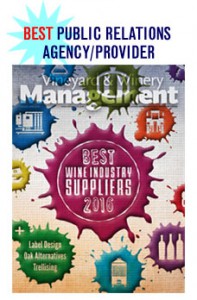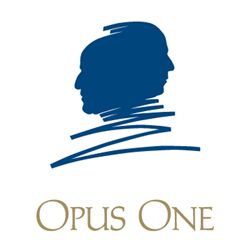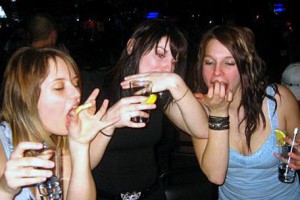And SWIG is back……the pandemic prohibitions are lifting, wine writers are out in the world meeting with winemakers and visiting wineries.
We heard about one extended press trip recently which may be one for the record books, so we thought we’d sit down with that writer and ask some questions about how wineries measure up, since we’re all rusty after more than a year of no visitors and Zoom-only meetings.
“Deep Glass” (we’re giving the journalist an alias) spent two weeks this spring visiting wineries on the North Coast, including Napa, Sonoma, Lodi and Suisun Valley.
Deep Glass and the several writers in the group experienced more than 50 winery visits (and in a one situation, two different winemakers came to the group while at dinner to present their wines). The group was also treated to at least one meal on most of those days.
Here is the result of Deep Glass and I taking a look at how wineries are welcoming the media these days.
We are intentionally not naming any names.
What was the most hospitable touch you experienced?
One of the experiences I was really touched by was when the winemakers/winery owners invited our group of journalists into their home and made us a meal. One winery made us an amazing Catalan style breakfast and served it in their backyard. Another created a huge elaborate meal of duck confit which was exquisite. It wasn’t about what they cooked, it was the effort and thought that was put into the meal. We may have started out as strangers, but we left their homes feeling like friends. That really matters when those personal connections are made. Those impressions last when I am sitting down to write an article.
What was the cleverest touch?
We received some truly useful and thoughtful branded swag. For example, we received wine keys with the brand logo on them. I always smile when I use them at home thinking back on my experience with that winery and I think of their wines. When pitching articles to write for outlets, those little things are awesome reminders of wineries to use as subject matter. A little psychological nudge so to speak. We also received things like pens and notebooks. No matter how organized the writer, things happen like lost pens, pens that run out of ink, or notebooks that fill up. Having those items handy is such a lovely touch. Besides, no winery wants information to get missed because someone didn’t have anything to write with. Taking good quality notes on a phone isn’t ideal and at least for me, things get missed out on, especially if our host speaks quickly or jumps topics often.

What was the newest way food/a meal was presented?
I was fascinated by a “Charcuterie Cone.”. It basically consisted of everything you would get in a charcuterie plate but wrapped in a paper cone and served with a bamboo fork. It created less waste of paper products and was totally recyclable/compostable. I also thought it was super clever from the health and safety aspect in Covid times where sharing food isn’t the best idea.
At another meal, all of the components of our “picnic style” lunch (cheeses, chutney, salad, olives and fruit) were presented in reusable glass jars. That was awesome and looked great in our photos.
Was there anything outlandish?
I want to preface the next statements acknowledging the fact that our experience was truly exceptional. It was private and unique with lovely views.
We had lunch at a winery that was made by the property’s in house executive chef. It was an outstanding meal to say the least. The price of said meal was $250 per person. Considering this, we all agreed that for a once in a lifetime experience, we might just pay that. However!!! You cannot get that lunch from the winery without the commitment to buy 6 bottles of their wine. It brought the price up to about $1,500 per person.
We all felt that the expectation to purchase wines at this level is one of the things that stereotypes Napa wine tasting and experiences as not affordable to the public. What happens if the person doesn’t enjoy the wines? Are they stuck with that purchase? If you make good wine, people will buy it. Honestly, I felt a bit bullied by the concept of being forced to buy. It rubbed us all the wrong way. All of my colleagues agreed that this was not a good thing.
Think about it: The French Laundry, with wine pairings, is only about $450 for dinner. That’s from Thomas Keller, the world-renowned chef. The chef that served us is super talented, but completely unknown. We could have had that lunch many places around the world for a fraction of that cost with just as beautiful views and service. It was very clear to us that they were catering this experience to rich Texans.
Did you see something that you wish every winery would adapt as a part of the guest experience?
Yes, having social media channels posted and easy to find on tasting mats, signs and as part of every part of literature they give as handouts including any specific hashtags they would like used. This is free advertising for them by their customers and they are silly if they don’t utilize that.
I also feel that it is CRITICAL for wineries to offer good internet connectivity to their guests. First for guests to post their experience all across their personal social media channels. For journalists and influencers, it is essential to get that content pushed out immediately for stories, posts, and reels. There is nothing more frustrating than trying to get content up for a winery experience only to have terrible/or no internet service. That means we have to post later and stuff may be not uploaded or at that later point it becomes irrelevant.
With that said, smart wineries capture email addresses of every single person who logs onto their internet. They add those email addresses to their marketing lists. Let me give you a great example of this working: I visited a winery and got added to their email list. They sent me one of their e-blast emails telling me of a fantastic sale they were having on a wine I truly loved. Because of that email, I shared that deal on my social channels and sold at least 6 cases (that I know of) of that special deal wine to my followers, friends, and colleagues. I’d say that was smart marketing. You just never know when you can turn those email addresses into sales.
We’re all so sensitive about recycling and respectful environmental practices. How did you see this handled during your visits? For example, how was water served?
We have been seeing a lot of use of recyclable plates and cutlery made of bamboo. Water is being served more and more in reusable glass bottles, carafe style. I am seeing recycle bins and bins for food compost being used for picnic areas in wineries.
There must have been some glitches or things that went wrong.
I think the biggest glitch on this trip was wineries not being prepared for the podcast. What I mean by that is that they didn’t consider that a quiet space was needed to get good sound quality. One had us outside in the wind, and although we were tented, the wind kept banging the metal poles throughout the interview. Also, there was no other place for the rest of us (who weren’t participating in the podcast) to sit and talk while the podcast was going on. That was not a good use of our time plus there was no internet signal so we could upload content. We would have been far better served to be in a place where we could talk about the wines with other staff members or have been taken to another area where we could at least speak amongst ourselves or gone on a drive through the vineyards.
Did the wineries provide press kit folders with printed-out materials such as fact sheets?
On this trip, everyone was pretty well organized with printed materials. Only one or two didn’t have them. We do refer to them when we are writing because many of the websites don’t have the materials easily findable or simply don’t have the type of technical information on their websites which writers are most interested in.
Things I wish they would always include on the tech sheets:
How many cases of that wine are produced.
Clone selections – this is huge for certain grapes
ABV %
Anything special about the vineyard or location. Tell a story about the wine right on those tech sheets to give us ideas. Is the wine named after a person? Why did they choose to do that? Why did they choose to make this particular wine in this style? Anything that would lead journalists to give more detail rather than just statistics and tasting notes. Whilst most of us don’t use other people’s tasting notes, they are still handy to have. Sometimes you simply can’t think of a specific flavor during a tasting or your notes get unreadable or destroyed. You can refer back to those tasting notes as a back up.
Note: Please oh please put all of the information on your websites in a very clear way so we media we can find it. Thank you in advance!
Did some wineries give you flash drives or memory sticks?
No one gave us flash drives on this trip, but I have had them in the past and they were useful rather than having a bunch of paper to keep track of. However, that said, many people don’t feel comfortable with putting a foreign memory stick into their computer. It is really not safe or smart. I might suggest that the wineries send digital copies of the tech sheets as a follow up. Saves paper.
Clever use of technology anywhere?
QR scan codes where menus can be seen on your phone rather than printing out menus was great (saves paper and is safer). Putting the social accounts in QR scans makes it easier for people to tag your business in photos. I saw these little cards attached as part of tables so that when you sit down you have that information right in front of you. They were printed on coated thin metal sheets and screwed onto the tables. One time cost, and then it saves the environment in so many ways.
Did the wineries give you samples when you left? Any comments about how that was handled?
Pretty much every single winery gave us samples and a gift bag to take with us. But even further to that, there were some wineries who offered to ship those gift packs to us since they understood their wine sitting in a hot car or being schlepped home on a plane would not be good for the wine. I have to say that was one of our favorite things was having that worry taken away from us. It was a big relief.
Some of the gift bags held many cute little treats, from branded wine keys to fridge magnets, soap made from grape pumice, wine salts, and recipe cards. Samples of olive oils, preserves, or cooking-related items are always so lovely and special. One winery gave us a cookbook which paired their wines with easy to make interesting dishes.
Was there anything you specifically thought was a great personal touch?
One of the things I have seen for the first time on this particular trip was personal emails from winemakers thanking us for visiting them. My jaw hit the floor. These were not just form emails. Each one was thoughtful and touched on our experience with them. It made each of us feel like we were important. We all agreed it forged a closer relationship to that brand. It’s those small things that are huge. From this trip I have had 6 of these types of emails. Fantastic! It also encourages me to send my articles directly to that person and not just to the PR person.
Could you tell if the winemakers or hosts knew something about you and our outlets? Knowing where you live or referencing something that you’d written about recently? Or…does that not matter?
I can’t recall that on this specific trip, but it has happened to me many times. The winemaker / host complimenting on something specific about our writing or other projects. It made me feel like they cared about the quality of what was being written about them. It does matter! In one specific case, because they made a point to comment, I took extra care in what I wrote about them knowing they’d be reading it.
Is there anything you wish wineries wouldn’t do when you visit?
I have probably visited several hundred wineries around the world. Not that I feel like I know everything, but getting a tour of the production facilities and crush pad (unless they are truly unique or cutting age tech) is pretty much the same old thing. I am also not the public who needs to be educated on the basics of wine. That happened at a couple of wineries on this trip and I could see my colleagues roll their eyes during these sessions. I’d rather focus my time with the winemaker/host on the wines and getting the story behind them. Often our time is limited to gather all of our information and get our photos done and this is just not needed.
What do you wish they would do instead?
Talk about cool new grapes you might be experimenting with, or do barrel tasting trials with us. Let us taste what you are doing for the future and get our inner wine nerds excited!
Did you feel that the wineries you visited effectively communicated their brand message?
It is a very frustrating and confusing time in the wine industry at the moment. There are many buzzwords being thrown around like organic, biodynamic, sustainable, Napa Green, Lodi Rules, etc. There is no one thing anyone can point to that makes these topics clear to us as journalists, or to consumers. Instead, I’d like to see wineries and wine brands talk in more specific terms such as: what they do to be stewards of the earth, such as introducing pollinators or having natural pest control in the form of roosting boxes for birds of prey, beneficial cover crops, use of solar energy, and water conservation/capture efforts. Consumers want this information and they are more likely to follow businesses who are open about their efforts to be socially responsible and eco-friendly. I am encouraged by more wineries discussing becoming B-Corp certified. I think that may be a clear way forward and something that is easier to understand.
One winery had brand messaging down in every single staff member who spoke to us. They echoed their ethos and business practices over and over and we had no doubts about who they were when we left them. Impressive!
What are your pet peeves in the wine industry when it comes to marketing?
I can tell you that there isn’t one of my fellow journalists who isn’t enraged when we hear false advertising when it comes to wine. Wild claims like sulfite free or low carb/low calorie wines really get our backs up. This is especially bad when the low calorie/low carb wines get those numbers by pouring a smaller portion than what is normal! Of course it’s lower calories/carbs for less wine! Our group of wine journalists discussed these topics at length during our trip. Sulfite free… come on folks! Please stop.



